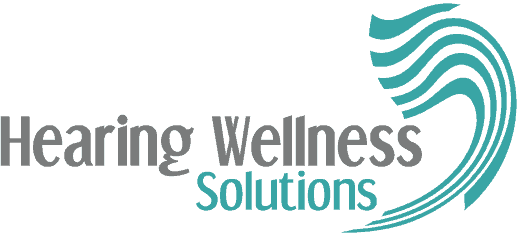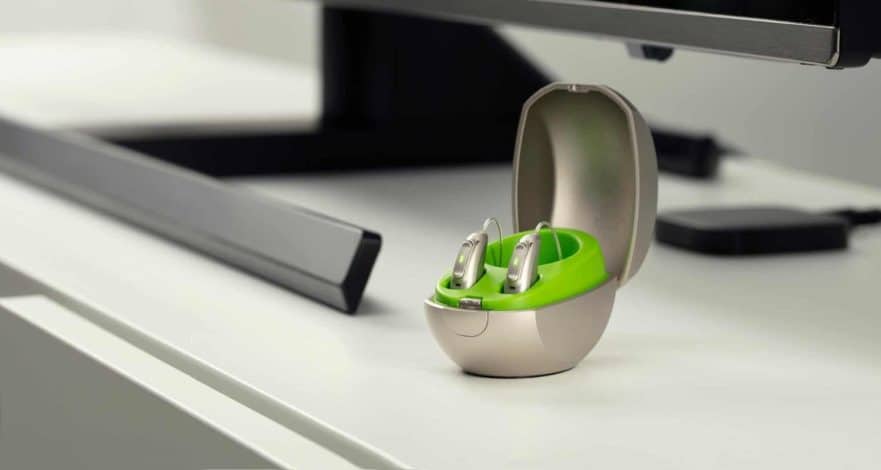Rechargeable hearing aids used to be a kind of gimmick that we would see come onto the market every so often, only to quickly fade away. They typically had short battery life—not enough for a full day’s use. When using all the features that a set of hearing aids had to offer, the batteries would die even faster. And, to make matters worse, the batteries themselves would usually need to be swapped out before the hearing aids themselves had run their course. All in all, they were not very practical.
All of that has changed in the last few years. New and improved lithium-ion technology, as well as a less power-hungry Bluetooth protocol, has allowed rechargeable hearing aids to be a truly viable option, and the better choice for most people, most of the time.
About Disposable Batteries
Hearing aids that use disposable batteries rely on zinc-air batteries. While these do last longer than a single charge of a set of rechargeable hearing aids, you need to keep a supply of fresh batteries on hand as replacements. They must be discarded by dropping them off at a hearing aid retailer or other appropriate battery recycling outlet. The hearing aids themselves require a battery door through which to insert and remove the batteries, and these must be left open at night for moisture to evaporate.
How Are Rechargeable Hearing Aids Different?
Starting to use rechargeable hearing aids is not as simple as placing “rechargeable” batteries into the battery compartments of traditional hearing aids. Lithium-ion batteries require a bit more real estate to provide the power that a zinc-air battery does, and the hearing aid itself utilizes a different design to get the most benefit out of the switch to rechargeable batteries.
Rechargeable hearing aids have the batteries built-in to the body of the hearing aid, typically in a BTE (behind-the-ear) design, though the Starkey company does make a rechargeable ITE (in-the-ear) hearing aid. Instead of replacing batteries or removing them for charging, you simply place your hearing aids on a charging station at night. The charging station is plugged into the wall, and charges your hearing aids fully in about three hours. Some chargers are also available that have their own batteries built in, so you can charge your hearing aids even when you’re not near a power outlet.
What Are the Advantages of Rechargeables?
There are several advantages to updating to rechargeable hearing aids, the next time you need new aids.
- Full Day’s Use – With disposable batteries, your batteries may last for several days or, in some cases, weeks. But they may die at an inopportune moment in the middle of the day. Then you’ll need to replace your batteries or have to go without your hearing aids until you’re able to make the swap. Rechargeable batteries typically last about 18 hours (though some models boast up to 30), allowing you to make it through your entire day and charge them at night. When you wake up in the morning, you know you’re starting with a fresh charge and will not have a battery failure in the middle of the day.
- Safer for Kids and Pets – Disposable batteries are extremely harmful when swallowed and require immediate medical attention for pets and children alike. While a rechargeable hearing aid is not safe to eat, either, it’s less likely that it will be eaten, and more likely that you’ll notice if it is!
- Less Vulnerable to Moisture and Debris – Rechargeable hearing aids do not require a battery door, which is where a lot of moisture and debris gets into a set of hearing aids. Moisture is responsible for about 60% of hearing aid repairs made out of warranty. The fewer openings in your hearing aids for damaging stuff to get inside, the better!
- Environmentally Friendly – A set of hearing aids can go through around 600 batteries in the course of wearing them. With rechargeables, you’ll only use two batteries! While these will still need to be properly recycled, it is a net gain for the environment.
- Easier to Handle – For those with arthritis or other dexterity issues, tiny disposable batteries can be hard to handle. Rechargeable hearing aids need only be wiped down with a clean, dry cloth and placed on their charging station at night.
Are There Any Disadvantages to Rechargeables?
Yes, there are a few drawbacks that may be a dealbreaker for some wearers.
- Not Available in All Hearing Aid Types – Most rechargeables are BTE or RIC (receiver-in-canal). While Starkey makes a rechargeable ITE, anything smaller cannot be effectively powered by rechargeable technology yet.
- Not Available for Most “Power” Aids – For those with greater-than-moderate hearing loss, rechargeable batteries may not provide enough power for a full day’s use. However, there are a few rechargeable models for those with severe hearing loss.
- Require a Reliable Power Source – For those who spend a lot of time camping or otherwise away from power outlets, disposables may be a better option.


